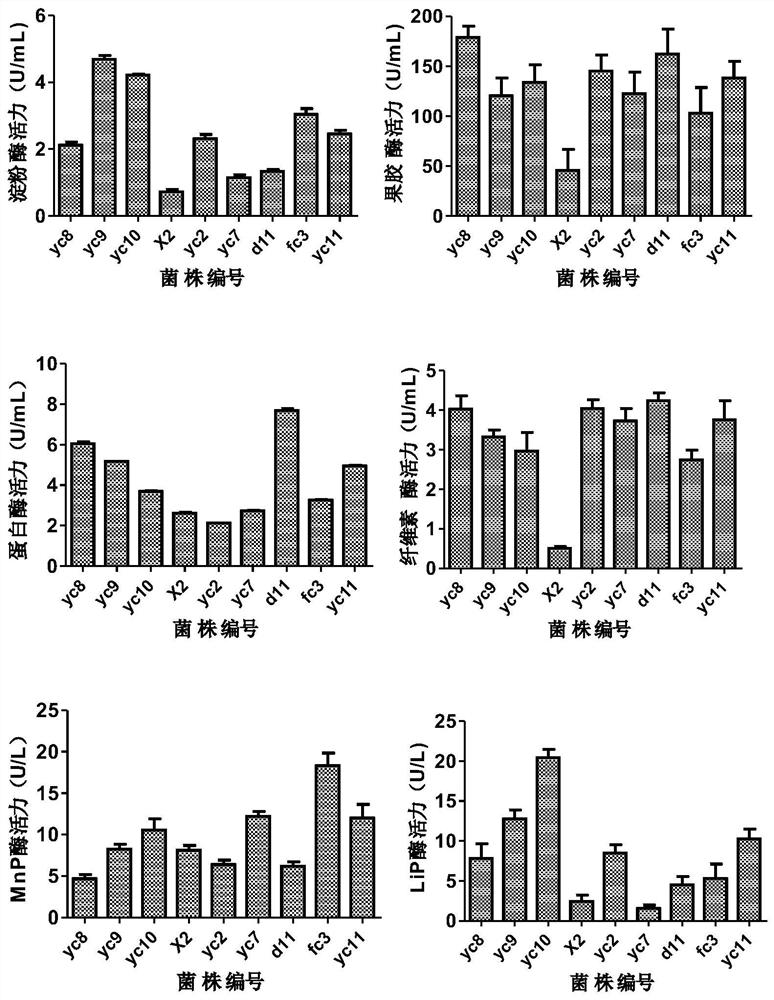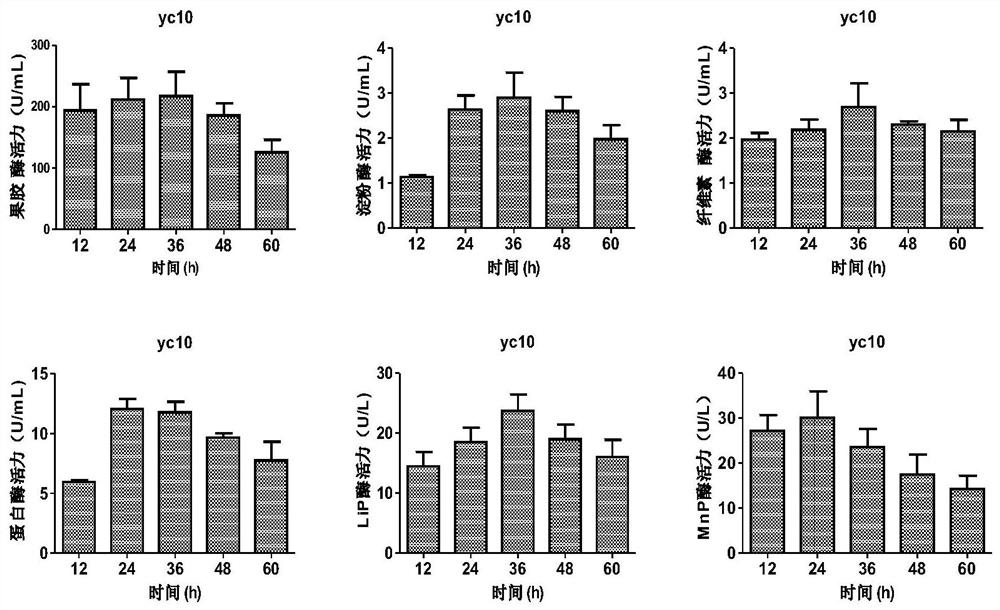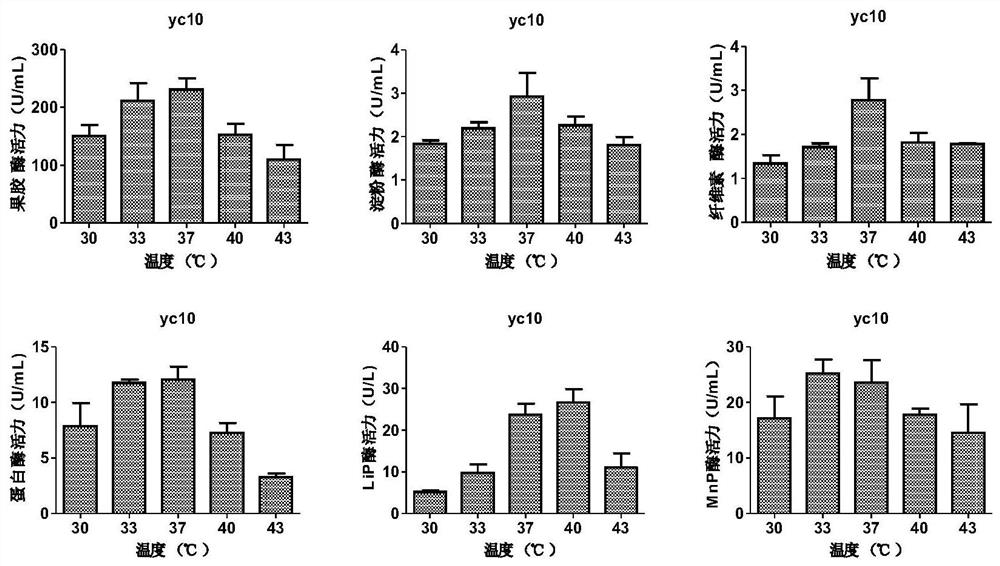Bacteria with multiple degradation effects on bad components of tobacco leaves and application
A technology of tobacco and Pseudomonas, applied in the field of microorganisms, can solve problems affecting the aroma and taste of cigarettes, the adverse effects of smoke, affecting the burning speed of tobacco leaves and the safety of smoking and smoking
- Summary
- Abstract
- Description
- Claims
- Application Information
AI Technical Summary
Problems solved by technology
Method used
Image
Examples
Embodiment 1
[0031] Embodiment 1 has the screening of the bacterium of multiple degradation effect
[0032] 1. Separation and purification of bacteria: Take an appropriate amount of sample in a conical flask, add sterilized normal saline, put it in a shaker at 30°C, shake at 180r for 30min, and dilute the bacterial suspension to 10 -1 ,1 0-2 , 10 -3 , 10 -4 , and isocratic gradients were spread on LB plates, placed in a 37°C incubator for 48 hours (two parallels were set for each concentration gradient), and the strains with different colonies growing on the plates were selected for isolation, purification and preservation.
[0033] 2. Preliminary screening of bacteria: Spot the above-mentioned isolated and purified bacteria on different types of screening medium plates, observe the presence and size of the transparent circle, and select bacteria that can degrade multiple components at the same time for isolation, purification and preservation.
[0034] The screening medium is:
[0035] ...
Embodiment example 2
[0066] Enzyme production condition optimization of implementation case 2 bacterial strain
[0067] 1. Effect of fermentation time on the enzyme activity of the strain
[0068] The cultivated seed liquid is inoculated in the LB liquid medium of 100ml, 37 DEG C, 180rpm shaker culture, every 12h gets fermented liquid and measures the enzyme activity of fermented liquid (every group sets three parallels), draws the most of bacterial strain The best fermentation time is 36h ( figure 2 ).
[0069] 2. Effect of fermentation temperature on the enzyme activity of the strain
[0070] Inoculate the cultured seed solution into 100ml of LB liquid medium, set the temperature at 30°C, 33°C, 37°C, 40°C, 43°C, and culture on a shaker at 180rpm for 36h, and set 3 parallels for each treatment. The fermented liquid was taken to measure the enzyme activity, and the optimal culture temperature of the bacterial strain was 37°C ( image 3 ).
[0071] 3. The effect of different pH on the enzyme ...
Embodiment 3
[0083] Example 3 Research on the Action and Effect of Undesirable Components in Fermented Tobacco Leaf by Bacterial Strains
[0084] 1. Preparation of fermentation broth: inoculate the strain in liquid LB medium, and ferment in a shaker according to the best enzyme production conditions to obtain the fermentation broth of the strain.
[0085] 2. Spray the fermentation liquid evenly on different types of tobacco leaves, put the tobacco leaves in a constant temperature and humidity box to ferment for 48 hours, then dry and pulverize the tobacco leaves, and measure the content changes of undesirable components and aroma components in different tobacco leaves before and after fermentation.
[0086] Table 3 Contents of components in different types of tobacco leaves before and after fermentation
[0087]
[0088] Table 4 Contents of ketone aroma components in tobacco leaves
[0089]
[0090] Note: Tobacco leaf A is unfermented tobacco leaf, and tobacco leaf A10 is tobacco le...
PUM
 Login to View More
Login to View More Abstract
Description
Claims
Application Information
 Login to View More
Login to View More - R&D
- Intellectual Property
- Life Sciences
- Materials
- Tech Scout
- Unparalleled Data Quality
- Higher Quality Content
- 60% Fewer Hallucinations
Browse by: Latest US Patents, China's latest patents, Technical Efficacy Thesaurus, Application Domain, Technology Topic, Popular Technical Reports.
© 2025 PatSnap. All rights reserved.Legal|Privacy policy|Modern Slavery Act Transparency Statement|Sitemap|About US| Contact US: help@patsnap.com



